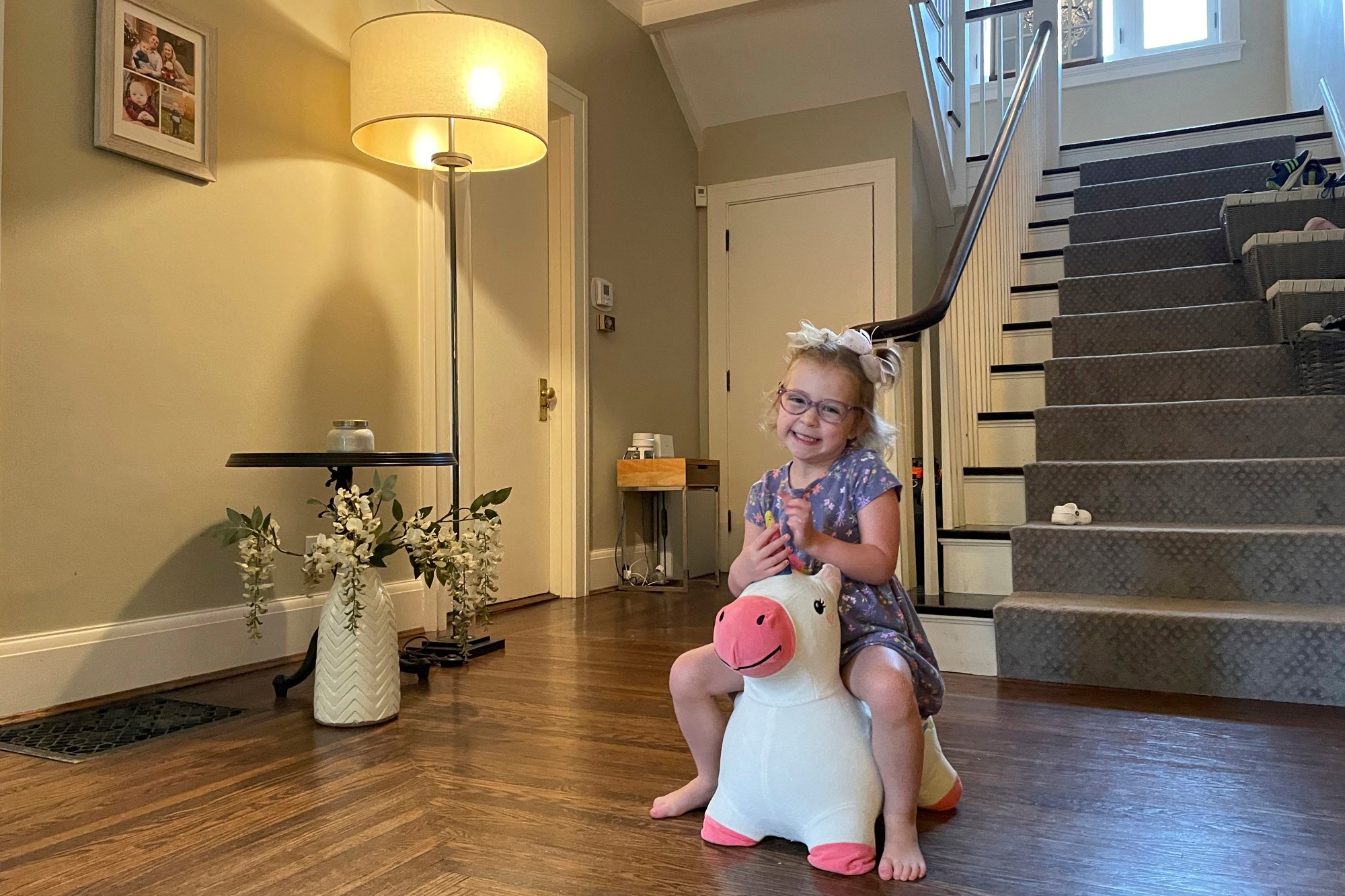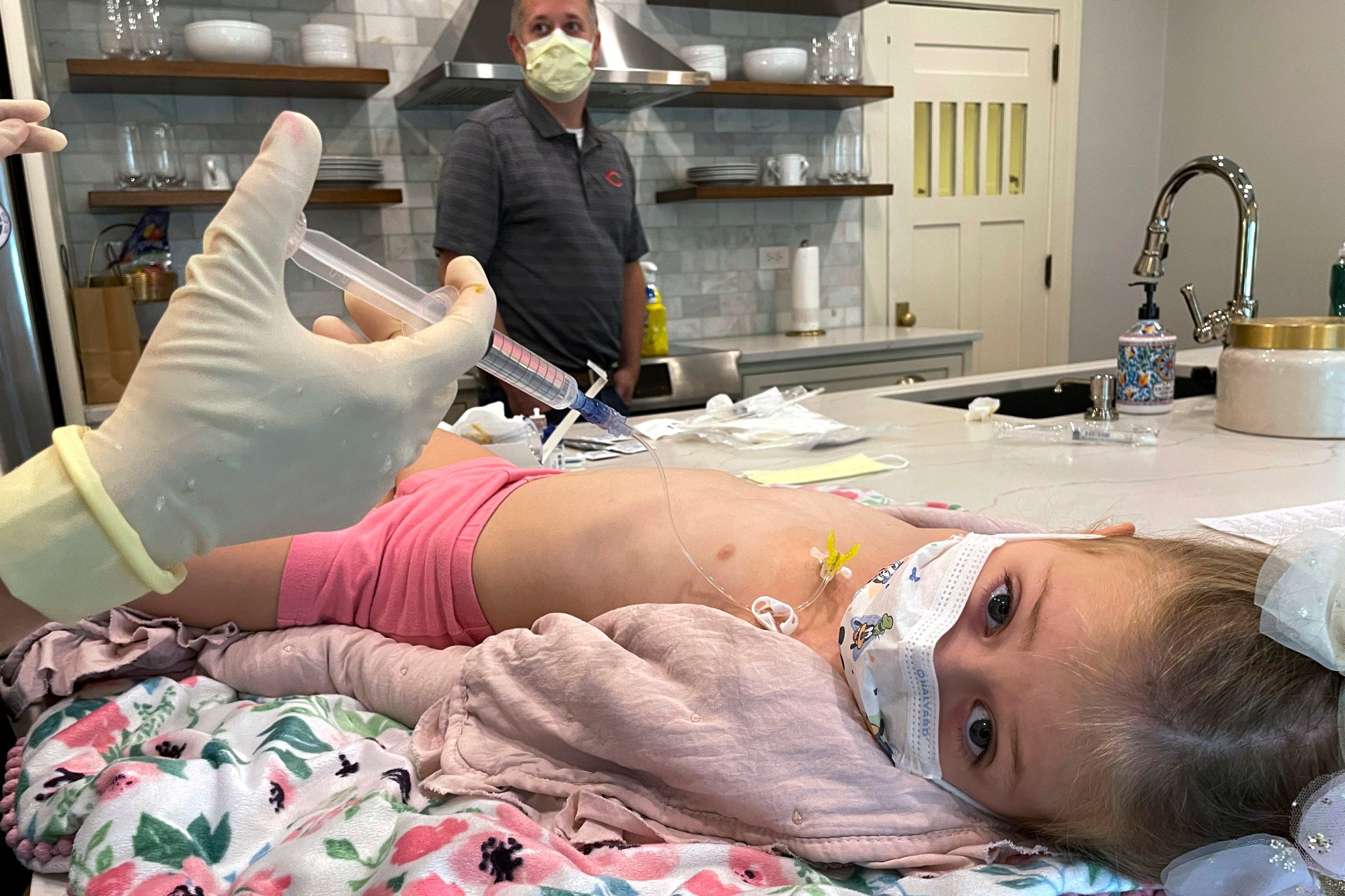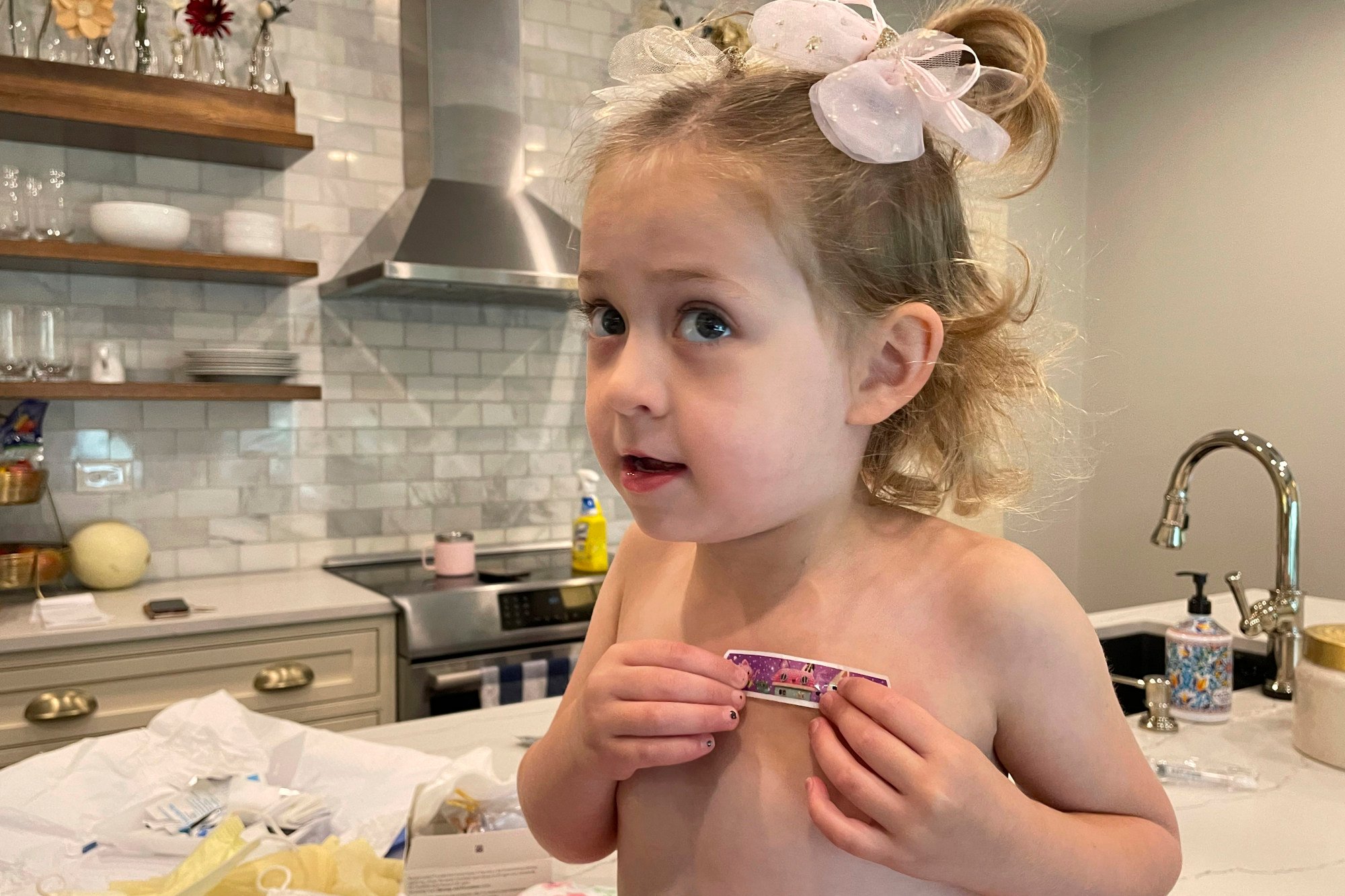
How whole genome testing saved the life of a baby with a rare disease, and why such tests could help millions more with rare genetic disorders
- Whole genome testing screens more genes than targeted tests and is more effective at detecting genetic disorders, as it did in a baby with a rare blood disease
- Doctors and researchers think the testing method could be used to diagnose rare diseases in millions of children – although it is more expensive
Brynn Schulte nearly died twice when she was a baby, at one point needing emergency surgery for massive bleeding in her brain.
No one knew what was wrong until a test that looked at her genetic blueprint found a rare bleeding disorder called factor XIII deficiency in an early diagnosis that saved her life.
“You have this hopeless feeling when you don’t really know what’s going on,” her father, Mike Schulte, says. “Casting a wide net made a world of difference figuring this out quickly and getting her the right care she needed almost immediately.”
Brynn, now four, got the genetic testing as part of a clinical trial, the results of which were recently published in the Journal of the American Medical Association.
Hong Kong start-up lowers cost of early autism detection using whole genome sequencing
Whole genome tests are nearly twice as good as narrower tests at unearthing genetic abnormalities that can cause disease in infants – the study found 49 per cent of abnormalities, compared to 27 per cent with more commonly used tests targeting particular types of genetic diseases.
Whole genome tests could negate the need to do several narrowly targeted tests on babies, which still might not find the disorder.

Experts say that there are some issues, because labs vary in how they interpret results, and whole genome tests are costlier and less likely to be covered by medical insurance.
But researchers envision that whole genome tests will eventually be used for millions of babies in hospital with confounding, sometimes life-threatening conditions.
Watching your child nearly die in front of your eyes twice is a memory I’ll never erase
“I’ve been doing clinical trials of babies for over 40 years,” says study author Dr Jon Davis, chief of neonatology at Tufts Children’s Hospital in Boston, in the US. “It’s not often that you can do something that you feel is going to really change the world and change clinical practice for everyone.”
The night after Brynn was born, her mother, Lindsay, noticed that her skin was grey, her breathing laboured. Blood had pooled under Brynn’s scalp, causing two bulges on her head.
Doctors transferred her to the neonatal intensive care unit (NICU) at Cincinnati Children’s Hospital Medical Centre, where she got blood transfusions and underwent tests for different bleeding problems.

Her condition improved and she went home – only to wind up back in hospital for a massive brain bleed when she was about a month old. A doctor warned she probably wouldn’t survive. A pastor prayed with the family.
“Everybody was very unsettled because nobody knew what the heck was going on,” Lindsay Schulte says. “I don’t think we slept. Watching your child nearly die in front of your eyes twice is a memory I’ll never erase.”

Then the Schultes learned about the clinical trial, which involved 400 infants admitted to hospitals. Brynn and both parents got the whole genome testing.
The diagnosis came in less than a week: she had the rare bleeding disorder factor XIII deficiency, which affects an estimated one in 2 million to 3 million live births, and another condition causing a severe reaction to certain anaesthetic drugs.
Doctors said that diagnosis would likely have been delayed – or even missed – with multiple narrower tests.
Too few mums are breastfeeding. These women are doing something about it
Many babies in the trial had genetic variants that narrower tests just couldn’t detect, says Dr Jill Maron, a study author and chief of paediatrics at Women & Infants Hospital in Rhode Island, in the US.
That’s because targeted tests cover maybe 1,700 out of 20,000 genes, so whole genome testing simply “captures more things”, says Dr Paul Kruszka of GeneDx, a company that provides whole genome testing but wasn’t involved in the study.
Another child in the clinical trial, two-year-old Cash Denaro of Oceanside, California, was found to have a genetic condition called Noonan syndrome, which involves heart defects, developmental delays and other problems.

Cash’s mother, Amanda Denaro, says that with the diagnosis, “we know what they think he may be delayed on, so we can work on these things more – not just push it under the rug”.
Broader access to full genome tests is necessary if more children are going to be helped, experts like Maron say. Full genome tests generally cost about three times as much as narrower tests, she says.
Then there’s the question of interpreting test results: in the study, more than 40 per cent of the time, labs found the same genetic variant, but one considered it the cause of disease while the other saw it as insignificant.
Can I do HIIT while pregnant without harming my baby? Yes, study finds
Philip Brooks of the US National Institutes of Health, which helped pay for the research, says it “remains a topic to be addressed”.
Despite such hurdles, some children are already benefiting from whole genome testing. It made all the difference in ensuring Brynn got the right treatment so she could thrive, says Dr Cristina Tarango, a haematologist at Cincinnati Children’s Hospital.

Today, Brynn lives a normal life apart from needing regular infusions of factor XIII replacement.
On a recent morning, Lindsay Schulte put Sleeping Beauty on the television and laid Brynn on a blanket on the kitchen counter. A visiting nurse took blood from a port implanted in her chest and Schulte administered the medication through a syringe.
As usual, Brynn chose the bandage to put over her port – one featuring a cat from her favourite show.

“All done!” her mother said, and soon Brynn was running barefoot across a couch, chasing her older brother.

